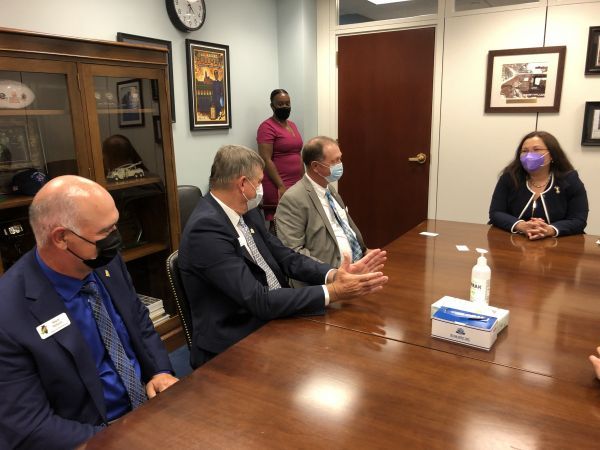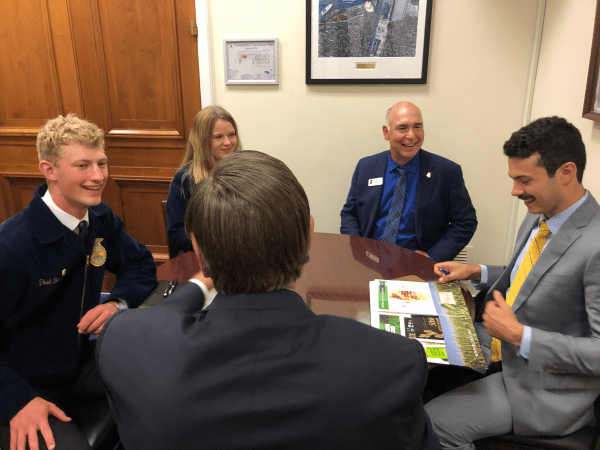Duckworth Speaks with Illinois Corn Growers and Illinois Soybean Association

[WASHINGTON, D.C.] – U.S. Senator Tammy Duckworth (D-IL) this week met with Illinois Corn Growers and Illinois Soybean Association members to discuss how she can continue to support our nation’s corn and soybean growers and rural communities in Illinois, including through the 2023 Farm Bill. During the meetings, Duckworth and the Illinois Corn Growers also discussed how protecting our state’s waterways (locks and dam infrastructure) and incentivizing agricultural production for renewable fuels (Next Generation Fuels Act) can help grow Illinois’s agriculture industry.
“America has always depended on our nation’s farmers and ranchers to grow the food and fuel we need, and I’m proud that the Bipartisan Infrastructure Law is such a significant boost for them,” Duckworth said. “The work of Illinois’s corn and soybean farmers is so important to the strength of our state and our nation, and I look forward to continuing my efforts to support farmers throughout the state to help make sure they have the resources and information they need.”

The Duckworth-championed Bipartisan Infrastructure Law will help support Illinois’s agriculture sector by providing major support to the state’s waterway infrastructure. In January, Duckworth helped announce that the U.S. Army Corps of Engineers (USACE) allocated $829.1 million in funding from the Bipartisan Infrastructure Law for the Navigation and Ecosystem Sustainability Program (NESP) on the Upper Mississippi River System (UMRS). This ecosystem restoration and navigation improvement project will update two Lock & Dams and build another which will make it easier for farmers with agricultural products to navigate the waterway.
Duckworth is also an advocate for American biofuels and helped introduce the Home Front Energy Independence Act in March. The bill would incentivize and expand the use and production of biofuel that’s grown in America, while making a less expensive fuel option available to the nation’s farmers and families.
PRESS RELEASE Contact: Gwen Pepin, Gwendolyn_Pepin@duckworth.senate.gov






